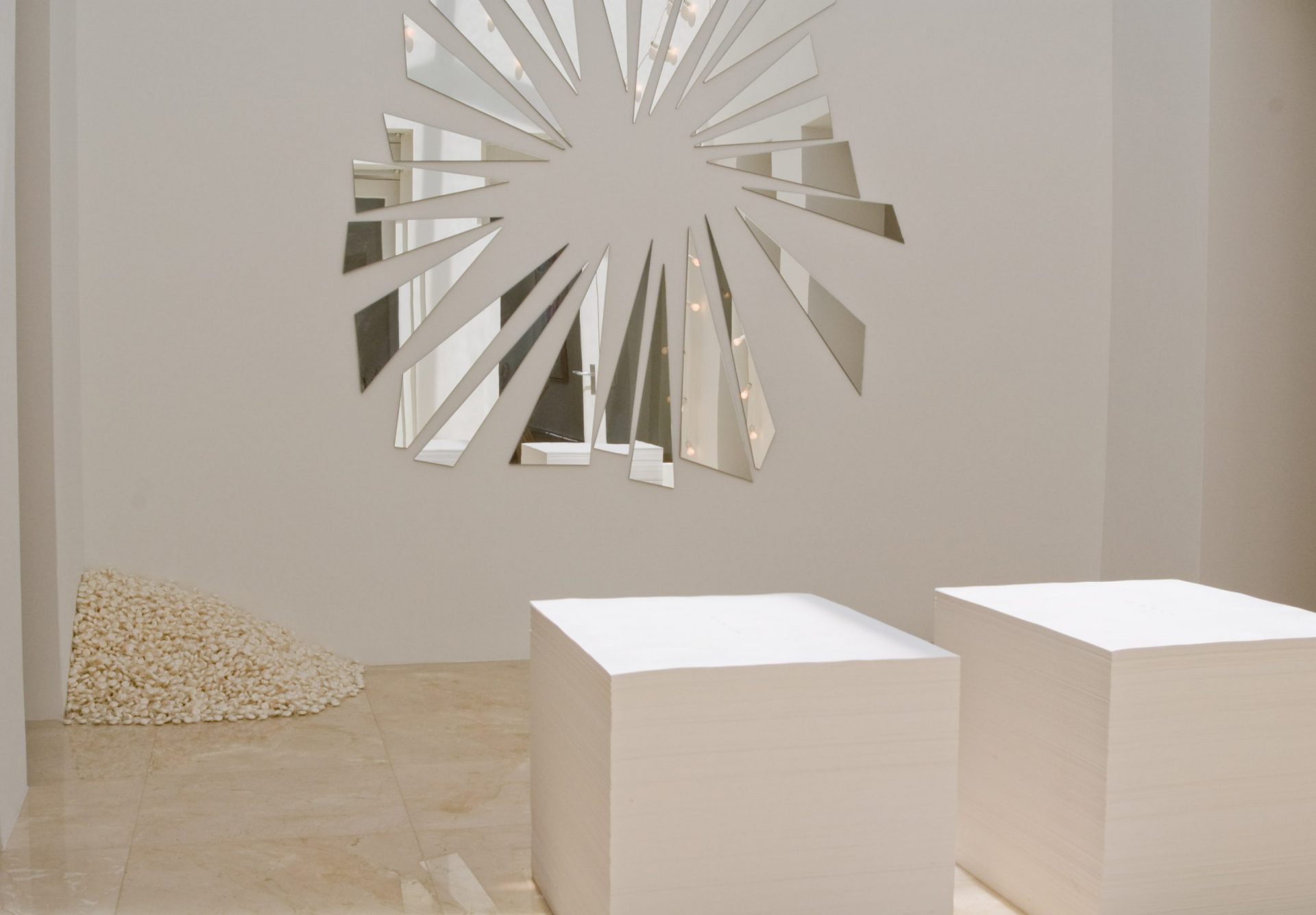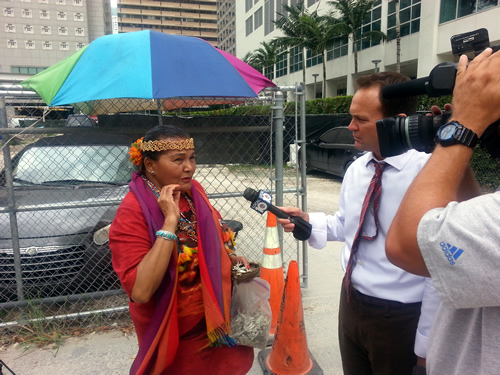NATIVE PRAYER VIGIL HELD AT DOWNTOWN SACRED ARCHAEOLOGICAL SITE
Dinizulu Gene Tinnie
Quietly, and without much public fanfare, in a week rightfully dominated by powerful remembrances and reminders of the March on Washington 50 years ago, a small but very significant noontime gathering of about a dozen people of diverse backgrounds in downtown Miami took place on Tuesday, August 27,to assert the rights of both past and future generations, as a Native American Prayer Vigil was held at an ancient Tequesta sacred site on SE 3rd Avenue and 3rd Street, where archaeologists recently uncovered ancient artifacts, human bones, a well, and no less than five circles of manmade holes (probably for posts) in the limestone bedrock of the construction site of a new entertainment complex, high-rise hotel, and retail spaces.
Carib Tribal Indian Queen Mrs. Catherine Hummingbird Ramirez, who is well known for conducting weekly Tuesday evening vigils at the Miami Circle, on the opposite side of the River, led the ceremony, which was held on the sidewalk outside of the site (for insurance liability reasons), and was strictly spiritual in nature, to honor Ancestors, and to pray for wisdom and Divine Guidance to prevail, rather than a demonstration or protest of against anything or anyone.
However, WPLG-TV, Channel 10 reporter Roger Lohse, who had presented a story on the archaeological finds the evening before and learned of the planned gathering, was on hand to interview Mrs. Ramirez, who spoke passionately about the need to accord the sacred site the appropriate respect, as much for generations to come as for those whose buried remains were found there and the culture they represented. “This is a big piece of history, world history,” she stated, and asked, regarding the decision-makers, “Can they at least, out of their heart, build above it, around it, or something or the other?”
That statement indeed set the tone for determining the future of this remarkable discovery, which confirms that the mouth of the Miami River on both shores was once a thriving Tequesta settlement, with many stories to tell.
For the archaeologists and preservationists, there are both encouraging and disturbing signs as the story continues to unfold. On the positive side, the developers have agreed to extend the time available to the archaeologists to investigate the site more thoroughly, beyond their original September 3 deadline.
In addition, fortunately, the rich concentration of historic finds occupy only a portion of the construction site, which allows for construction to proceed on the rest of the lot without destroying the integrity of the archaeological find, so that a satisfactory compromise may be possible with modifications of the building design.
On the other hand, the developers’ original plans are reportedly still in place to cut one of the discovered circles into pieces and move it into the entrance plaza of the new building, which preservationists consider would be an unnecessary and disrespectful desecration of a rare historical treasure over 2,000 years old.
Interest in the story has been growing rapidly, with numerous groups and individuals seeking to take action to ensure that this remarkable find is not lost or further destroyed. (Much of it was significantly disturbed when Henry Flagler had his Royal Palm Hotel built at the site in the early 1900s.) Weekly Native American Prayer Vigils are likely to continue at the site on Tuesdays at noon.
Photo caption: Carib Tribal Indian Queen Catherine Hummingbird Ramirez is interviewed by Channel 10’s Roger Lohse at site of ancient Tequesta archaeological discoveries. Photo by Marlon Moore.
art in and around South Florida

